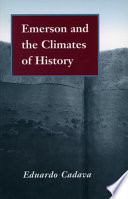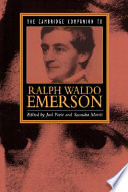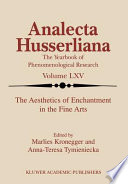 The problem of restoring to the world original and eternal beauty is solved by the redemption of the soul. The ruin or the blank, that we see when we look at nature, is in our own eye. The problem of restoring to the world original and eternal beauty is solved by the redemption of the soul. The ruin or the blank, that we see when we look at nature, is in our own eye.  Nature: Addresses, and Lectures - Page 64by Ralph Waldo Emerson - 1876 - 372 pagesFull view Nature: Addresses, and Lectures - Page 64by Ralph Waldo Emerson - 1876 - 372 pagesFull view - About this book
 | 1882 - 1014 pages
...restoring to the world original and eternal beauty is solved by the redemption of the soul. The ruin or blank that we see when we look at nature is in our...things, and so they appear not transparent, but opaque." " Build then your own world. As fast as you conform your life to the pure idea in your mind, the world... | |
 | H. Daniel Peck - 1994 - 212 pages
...P], 1 : 198, from which this ("Winter Walk") passage derives. See also Emerson in Nature: "The ruin or the blank, that we see when we look at nature,...of things, and so they appear not transparent but opake" (CW, 1 :43). 12 Martin Heidegger, "Building Dwelling Thinking," in Poetry, Language, Thought,... | |
 | Joan Burbick - 1994 - 368 pages
...an "instantaneous in-streaming causing power" (N, 43)? Emerson's final answer is to redeem the soul: "The reason why the world lacks unity, and lies broken...disunited with himself. He cannot be a naturalist, until he satisfies all the demands of the spirit. Love is as much its demand, as perception" (N, 43). Emerson... | |
 | Lee Rust Brown - 1997 - 306 pages
...who is no less preoccupied than Coleridge with problems of fragments and wholes, would later declare, "The reason why the world lacks unity, and lies broken...in heaps, is, because man is disunited with himself (CJV 1:43). For Coleridge, allegory and symbol are alternative ways of reading the significant products... | |
 | Eduardo Cadava - 1997 - 276 pages
...as he ought to be; but our way of painting this is on Time, and we say Was" (J, 5: 371). "The ruin or the blank, that we see when we look at nature, is in our own eye," he tells us toward the end of Nature. "The axis of vision is not coincident with the axis of things,... | |
 | Jonathan David Fineberg, Jonathan Fineberg - 2001 - 306 pages
...the transition in Emerson's "Nature" from the early "transparent eyeball" to the idea that the "ruin or the blank that we see when we look at nature, is in our own eye."12 But Whitman does not end his poem where Emerson and Wordsworth left their ruminations. In spite... | |
 | Joel Porte (ed), Saundra Morris - 1999 - 304 pages
...Nature the division between body and soul that Whitman, in this passage, claims to heal: "The ruin or blank, that we see when we look at nature, is in our...of things, and so they appear not transparent but opake" (E and L 47). According to Emerson, it is only during rare and privileged moments of vision,... | |
 | Gustaaf Van Cromphout - 1999 - 196 pages
...Nature, where "the redemption of the soul" supplies the correct point of view. Without such redemption, "the axis of vision is not coincident with the axis...of things, and so they appear not transparent but opake" (CW 1:43). Like Kant, Emerson insists that freedom, the sine qua non of morality, is "known"... | |
 | Marlies Kronegger, Anna-Teresa Tymieniecka - 2000 - 342 pages
...explanation for this shift in Emerson's thought lies in the conclusion to the essay at large: The ruin or the blank that we see when we look at nature, is...disunited with himself. He cannot be a naturalist until he satisfies all the demands of the spirit. (23) What Emerson's text suggests, then, is that the transparent... | |
 | David Fideler - 2000 - 482 pages
...restoring to the world original and eternal beauty, is solved by the redemption of the soul. The ruin or the blank, that we see when we look at nature,...of things, and so they appear not transparent but opake. The reason why the world lacks unity, and lies broken and in heaps, is because man is disunited... | |
| |